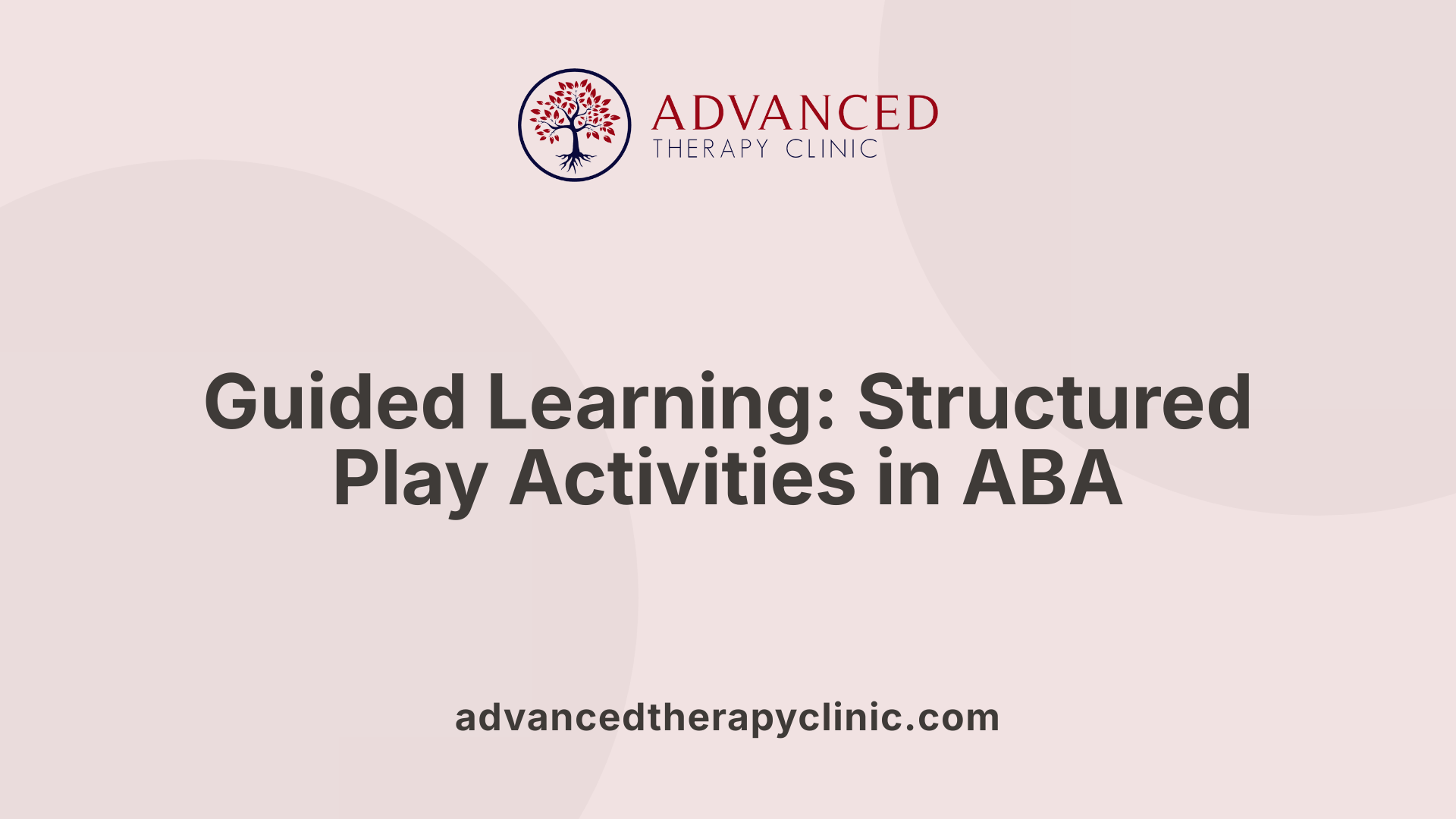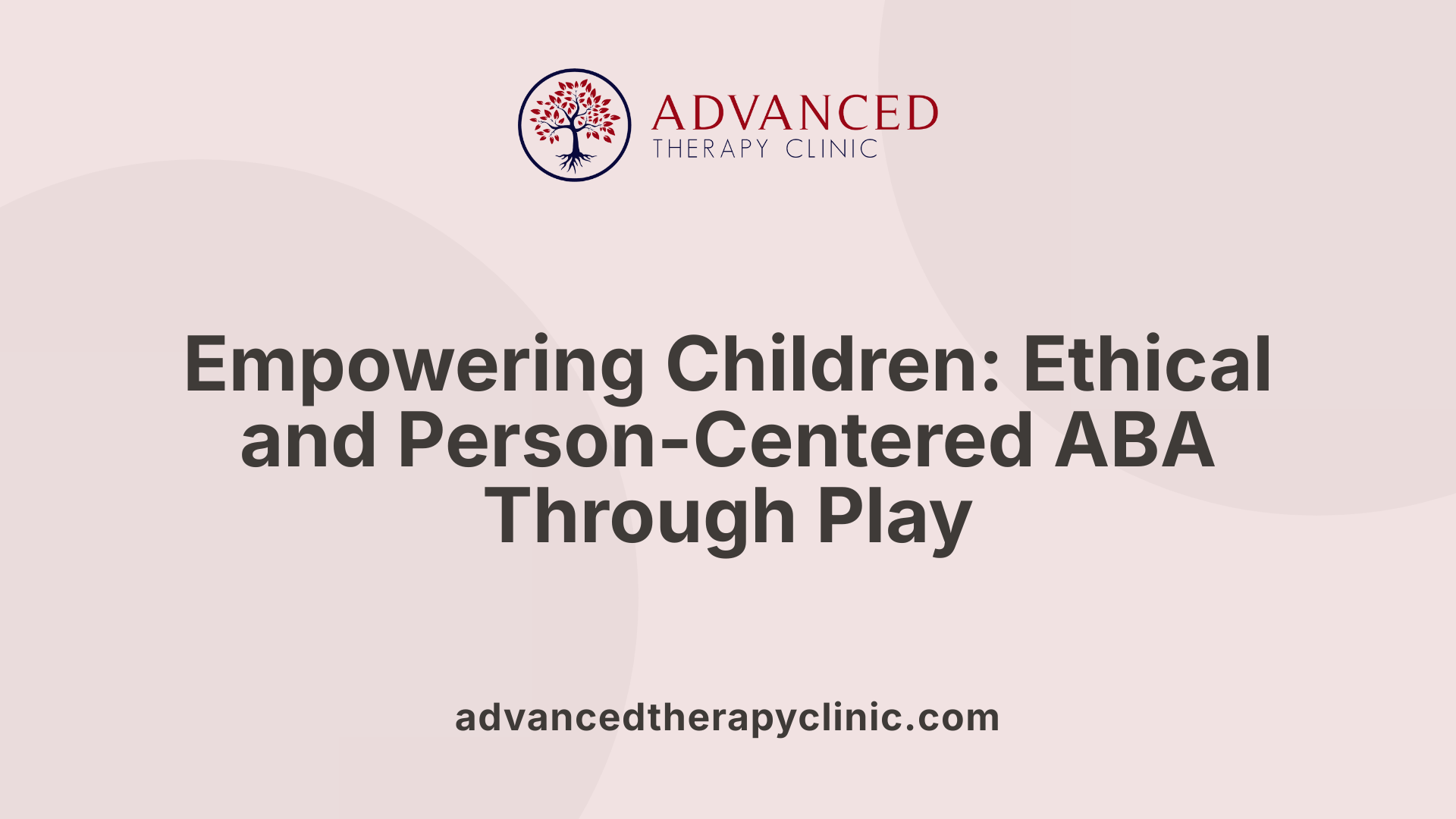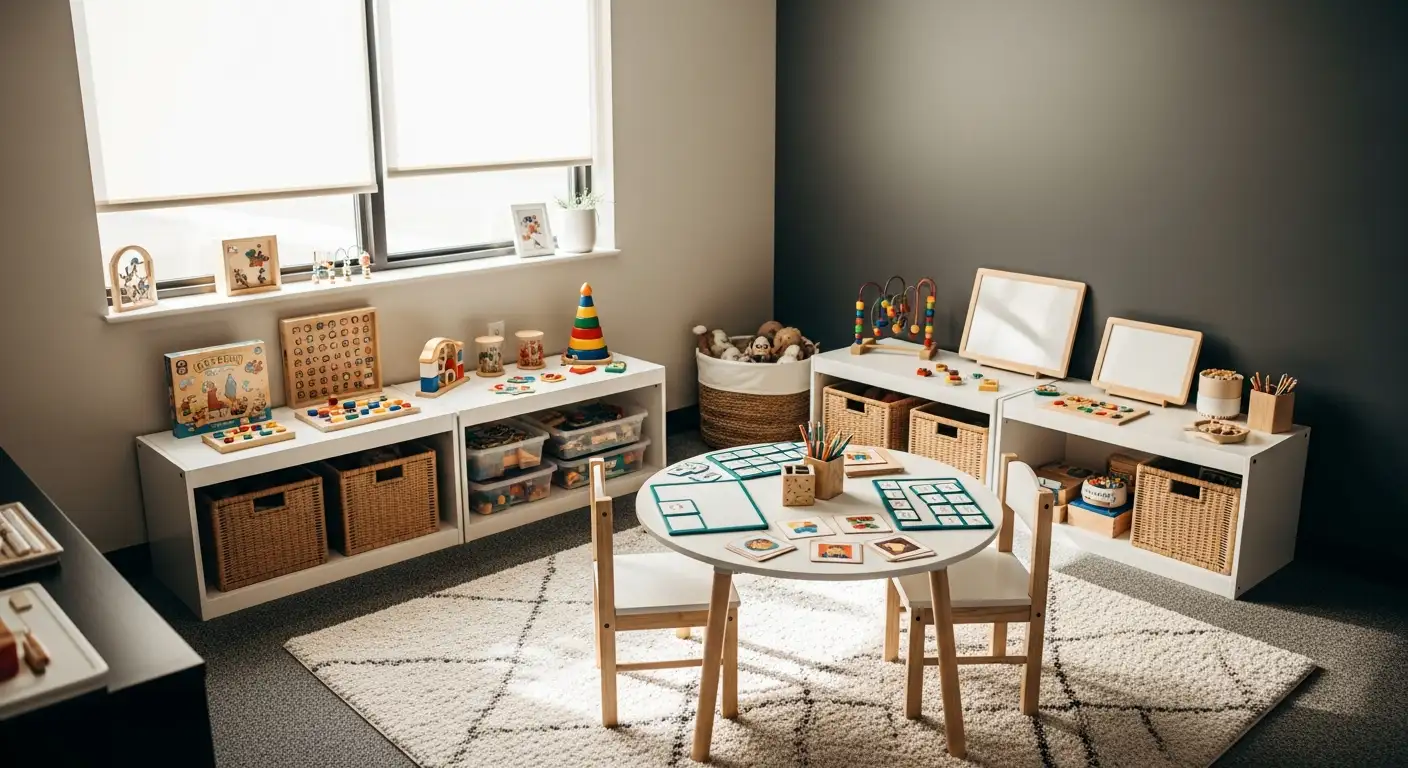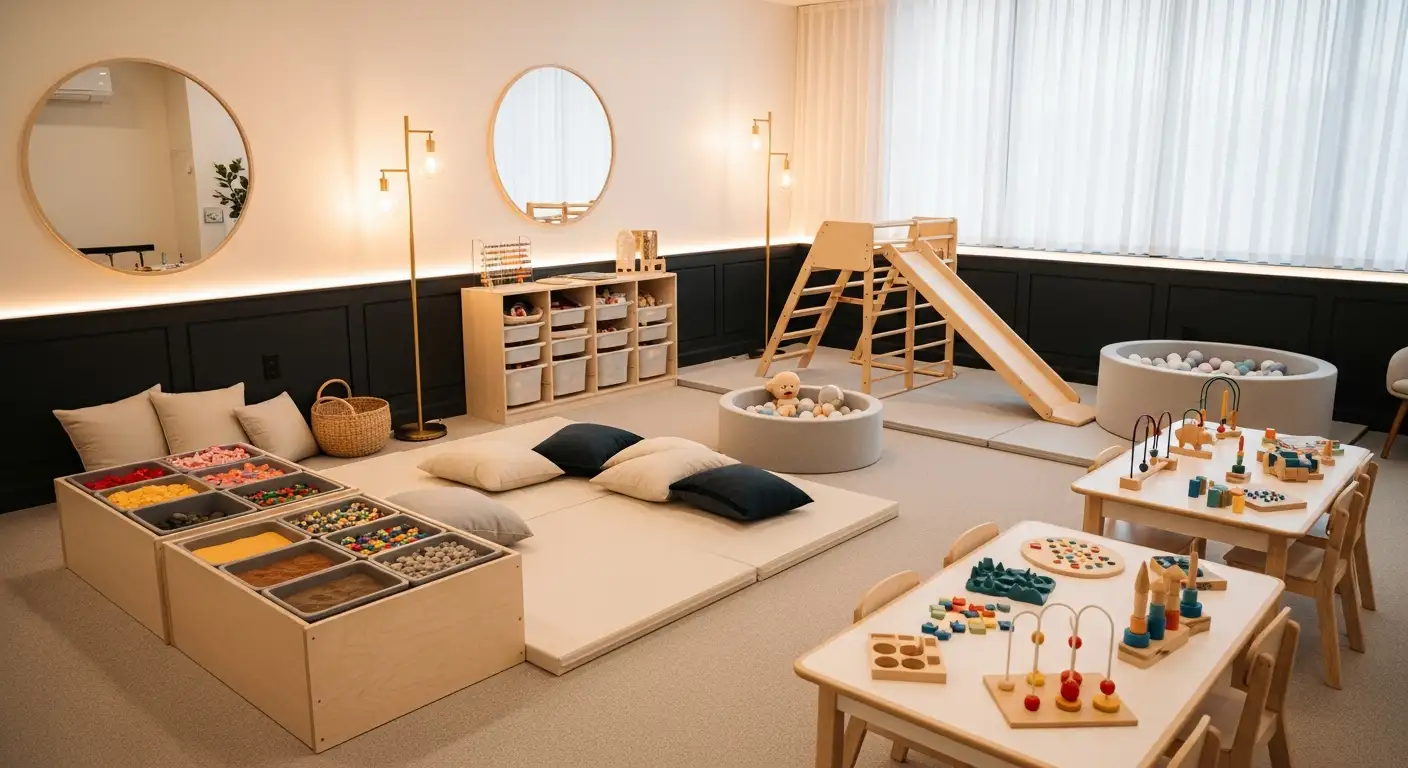How Behavior Analysis Encourages Structured and Unstructured Play


Understanding the Intersection of Behavior Analysis and Play
Play is fundamental to a child's growth, exploration, and learning. In therapeutic contexts, particularly within Applied Behavior Analysis (ABA), play is not only a natural activity but also a strategic tool. This article delves into how ABA therapy encourages both structured and unstructured play to promote essential developmental skills, highlighting the integration of various therapies and the evolution of ABA into a compassionate, child-centered approach.
Defining the Spectrum: Therapy-Related Fields Within the Behavioral and Developmental Domain
What are the different types of therapy-related fields included under the collective term mentioned?
The collective term for therapy-related fields within the behavioral and developmental domain includes a broad array of approaches and specialized disciplines. These range from behavioral therapies such as Applied Behavior Analysis (ABA), cognitive-behavioral therapy (CBT), and exposure therapy, to psychodynamic and insight-oriented therapies like psychoanalysis and mentalization-based therapy.
Humanistic and experiential therapies also form a core part of this spectrum, including person-centered, Gestalt, and existential therapies. Specialized modalities expand the range further to include animal-assisted therapy, art therapy, music therapy, and play therapy, each bringing unique methods to support personal growth and healing.
Additionally, trauma-focused treatments such as Eye Movement Desensitization and Reprocessing (EMDR) and mindfulness-based therapies play vital roles. Family, group, and couples therapies address systemic and relational challenges, rounding out the comprehensive set of approaches.
How do structured versus unstructured therapeutic methods differ in these fields?
Therapy-related fields employ both structured and unstructured methods to meet diverse client needs. Structured approaches use clearly planned interventions with defined goals, such as ABA's use of reinforcement strategies and task breakdowns or CBT's session-based cognitive restructuring.
In contrast, unstructured or expressive methods allow for open-ended exploration and expression, seen in art and music therapies or the free-play aspects of play therapy. This flexibility enables therapists to tailor support to individual preferences and developmental stages.
What is the goal orientation of these therapies?
The overarching goal of these therapies is to promote mental health, emotional well-being, and behavioral growth across populations. They aim to develop communication, social skills, emotional regulation, coping mechanisms, and overall personal development.
Each therapy modality targets specific areas; for example, ABA focuses on socially significant behaviors and skill acquisition, speech therapy enhances communication, and occupational therapy works on functional daily skills. Together, these fields offer a holistic framework to support diverse behavioral and developmental needs through evidence-supported and adaptable strategies.
ABA Therapy: A Foundation Rooted in Behavioral Psychology and Individualized Intervention
What Are the Core Principles of ABA Therapy?
ABA (Applied Behavior Analysis) therapy is a structured, evidence-based approach grounded in behavioral psychology. It focuses on understanding and improving socially significant behaviors through the careful use of reinforcement principles. Modern ABA emphasizes naturalistic teaching methods, play-based learning, and collaboration with families while respecting neurodiversity. Key techniques include positive reinforcement—rewarding helpful behaviors—structured teaching that breaks skills into manageable steps, and functional behavior assessment to understand why behaviors occur.
How Are Behavioral Assessments and Individualized Plans Used?
ABA therapy begins with thorough behavioral assessments to identify the child’s strengths and areas for growth. These assessments inform highly individualized treatment plans tailored to each child’s unique needs. Plans are data-informed and strengths-based, aiming to support communication, independence, emotional regulation, social skills, and participation. Progress is tracked regularly through data collection to ensure meaningful, real-life milestones are met, fostering confidence and motivation in the child.
What Are the Focus Areas in ABA Therapy?
ABA targets several important developmental areas. Communication development is central, teaching foundational skills for expressing needs and engaging socially. The therapy also supports social skills like sharing, turn-taking, and cooperation. Additionally, ABA promotes autonomy in daily routines and emotional regulation, helping children manage feelings and challenging behaviors safely. By breaking complex skills into smaller steps and reinforcing success, ABA helps children develop meaningful abilities that improve their quality of life.
The Evolution of ABA: From Rigid Compliance to Compassionate, Naturalistic Learning
How has ABA therapy evolved over time?
Initially, Applied Behavior Analysis (ABA) therapy was much more rigid and focused primarily on compliance, emphasizing structured repetition and clear, often strict behavioral targets. This early approach aimed to modify behaviors through consistent reinforcement but sometimes overlooked the individuality and comfort of the child. Over time, ABA has transformed into a more compassionate and person-centered model.
What does modern ABA emphasize?
Contemporary ABA therapy highlights naturalistic teaching methods, which means learning often takes place in everyday settings and incorporates the child’s natural interactions and interests. Play-based learning is a core component, making therapy engaging and enjoyable. This approach breaks skills into manageable steps through structured activities that feel fun and meaningful to the child.
Why is family collaboration important in modern ABA?
Family involvement is considered vital to maximize therapy effectiveness. Caregivers work alongside therapists to integrate strategies into daily routines, ensuring skills learned in therapy carry over to real life. Consistent communication with families helps tailor interventions to the child’s unique needs and strengths.
How does modern ABA respect neurodiversity?
Modern ABA values and respects neurodiversity, moving away from punitive measures or enforcing compliance for its own sake. The approach focuses on supporting communication, emotional regulation, social skills, and independence in a way that honors the child’s experiences and individuality. This shift embodies a more ethical and empathetic stance on behavioral therapy.
Structured Play in ABA: Guided Learning Through Clear Objectives and Therapist Support

What is Structured Play in ABA Therapy?
Structured play in ABA therapy involves planned, goal-oriented activities guided by therapists to teach specific developmental skills. Unlike free play, it has clear objectives, a defined start and end, and active engagement from the child. Therapists carefully design these play sessions to align with each child's unique developmental goals, keeping learning both focused and enjoyable.
Examples of Structured Play Activities
Common structured play activities include puzzles, building blocks, and turn-taking games. These activities are selected to develop problem-solving abilities, fine motor skills, cooperation, and social interaction. For instance, a puzzle might be used not only for cognitive skill-building but also to encourage communication by labeling pieces or requesting assistance.
Supporting Social and Communication Skills Through Structured Play
Structured play supports social skills by reinforcing turn-taking, sharing, and cooperative behaviors within a clear framework. It enhances communication by involving activities where children label objects, make requests, and describe actions, thereby fostering language development in natural, motivating contexts. Engaging in these guided play sessions promotes positive behaviors, self-regulation, and emotional control, making them integral to ABA's holistic approach.
Therapist Role and Family Involvement
ABA therapists actively support structured play by setting clear goals, encouraging child participation, and using positive reinforcement to reward progress. Families are encouraged to reinforce these learning experiences at home through preferred activities, visual supports, and positive praise to help carry over gains into daily life.
Structured play thus makes learning enjoyable and effective by blending child-led exploration with structured guidance, promoting essential communication, social, and cognitive skills in children with autism.
Unstructured and Play-Based Learning: Embracing Child-Led Exploration Within ABA

What Role Does Unstructured and Functional Play Have in ABA Therapy?
Unstructured play, including functional play, is an essential component of modern ABA therapy. Unlike structured play, unstructured play allows children to explore and engage with their environment freely, following their own interests and impulses. This child-led exploration promotes natural learning opportunities and supports creativity and imagination. Functional play involves using objects as they are intended and can foster problem-solving and cognitive development through everyday activities. In ABA therapy, unstructured and functional play complement structured interventions by giving children the chance to practice skills in more spontaneous and meaningful contexts.
What Types of Play Are Included in ABA Therapy?
ABA therapy incorporates various types of play to build a broad range of skills:
- Social Play: Activities focused on turn-taking, sharing, cooperation, and other social interactions that improve understanding of social cues and relationships.
- Free Play with Guided Support: Children engage in play according to their interests while therapists subtly guide interactions and learning opportunities to support developmental goals.
- Functional Play: Using objects correctly during play to develop practical understanding and coordination.
These diverse play formats ensure that therapy is engaging, child-centered, and adaptable to each child’s preferences and developmental stage.
How Does Play-Based ABA Benefit Language, Cognition, and Social Interaction?
Play-based ABA therapy offers significant benefits across key developmental areas:
- Language Development: Through play, children practice expressing needs, labeling objects, making requests, and using descriptive language in a natural setting.
- Cognitive Skills: Play activities such as building blocks and puzzles enhance problem-solving abilities and critical thinking.
- Social Interaction: Social play encourages cooperative behaviors, sharing, and understanding social norms, promoting stronger peer relationships.
By integrating unstructured and play-based learning, ABA therapy leverages children’s natural motivation and curiosity, making skill development enjoyable and more effective. This approach fosters holistic growth that extends beyond the therapy session into everyday life.
Integrating ABA with Complementary Therapies: Speech and Occupational Therapy in Play Contexts

How Does ABA Complement Speech and Occupational Therapies?
ABA therapy works hand-in-hand with speech and occupational therapies to create a comprehensive support system for children with autism. While ABA focuses on improving behaviors and teaching skills through reinforcement and structured approaches, speech therapy directly targets communication challenges. It helps children improve language skills using methods such as articulation therapy, language intervention, and augmentative and alternative communication (AAC) systems. Occupational therapy complements these efforts by developing functional abilities like sensory processing, fine motor skills, and daily living tasks that promote independence.
How Are Communication, Sensory Processing, and Daily Living Skills Developed Through Play?
Play is a natural, motivating way for children to learn, and all three therapies use play-based methods to engage children effectively. ABA incorporates structured play—planned activities with clear objectives and therapist guidance—to teach social skills like turn-taking, sharing, and cooperation. During these play sessions, positive reinforcement encourages desirable behaviors and skill growth.
Speech therapists use play to encourage language development by involving children in activities that promote labeling, making requests, and using descriptive language. Occupational therapists focus play on building sensory processing and fine motor skills with activities such as puzzles and object manipulation, which also promote problem-solving and self-regulation.
These play-based approaches not only make learning enjoyable but also help children practice essential communication and functional skills in natural, supportive environments.
How Does This Integration Provide Holistic Support for Children with Autism?
Combining ABA with speech and occupational therapy ensures that a child's behavioral, communicative, and daily living needs are addressed simultaneously. This holistic method supports foundational communication, social interaction, emotional regulation, and independence. Therapists collaborate and involve families to apply strategies consistently across settings, boosting therapy effectiveness and real-life skill generalization.
By integrating these therapies through play, children gain confidence and motivation while making meaningful progress across multiple developmental domains. The compassionate, individualized nature of these combined therapies respects neurodiversity and empowers children to thrive in daily life.
Positive Reinforcement and Data-Driven Progress: Sustaining Motivation and Measuring Growth in Play
Use of Positive Reinforcement During Play
In ABA therapy, positive reinforcement plays a crucial role, especially within structured play activities. Therapists intentionally reward helpful or desired behaviors during play to increase the likelihood these behaviors will continue. This might include verbal praise, tokens, or access to favorite activities, making learning experiences enjoyable and motivating for children.
Tracking Progress Through Data Collection
Progress in ABA play therapy is meticulously tracked through consistent data collection and regular review sessions. Therapists gather information on specific behaviors, skill acquisition, and engagement levels during play. This data-driven approach ensures that therapy adapts to the child's evolving needs and enables identification of successful strategies or areas needing adjustment.
Encouraging Meaningful, Real-Life Skill Development and Confidence
By focusing on meaningful, real-life milestones within play, therapy supports the development of practical skills such as communication, social interaction, and problem-solving. Achieving these goals fosters the child’s confidence and motivation to continue learning. Structured play thus not only creates an engaging learning environment but also equips children with skills that enhance their everyday functioning and independence.
Family Collaboration: Extending Structured and Unstructured Play Beyond Therapy Sessions

Why is caregiver involvement important in ABA play therapy?
Caregiver involvement is critical because it helps ensure that the skills learned during therapy sessions generalize to everyday settings. When families participate, children receive consistent reinforcement and encouragement, which reinforces learning and accelerates progress. Engaged caregivers also gain a better understanding of the therapy goals and methods, empowering them to support their child's development effectively.
How can caregivers reinforce play objectives at home?
Caregivers can reinforce learning from structured and unstructured play by choosing activities their child enjoys to maintain motivation. Setting clear, simple objectives for each play session helps focus on targeted skills, such as turn-taking or requesting. Using short, manageable sessions keeps children engaged and prevents frustration.
What tools support effective home play reinforcement?
Visual supports like picture schedules and cue cards aid comprehension and guide children through play steps. Caregivers are encouraged to provide consistent positive reinforcement, such as praise or small rewards, to encourage desired behaviors. Integrating these tools and strategies creates a supportive environment that bridges therapy and daily life, enhancing the child’s independence and skill retention.
Ethical and Person-Centered ABA Practices: Promoting Respect and Empowerment Through Play

How has ABA therapy evolved to embrace ethical, person-centered approaches?
Modern ABA therapy has shifted away from early methods that focused heavily on compliance and rigid protocols. Today, it emphasizes compassion, respect for neurodiversity, and collaboration with families. This person-centered approach honors each child’s unique strengths and preferences, aiming to empower rather than control. Therapists focus on supporting autonomy, building on what the child can do, and tailoring interventions to their individual needs and interests.
Why does modern ABA avoid punitive methods?
Ethical ABA practices explicitly reject punishment or strategies aimed solely at enforcing compliance. Instead, positive reinforcement is central — rewarding helpful behaviors to motivate learning and growth. This shift fosters a safe and supportive environment where children feel valued and encouraged, reducing fear or resistance that punitive approaches can generate.
How do strengths-based, respectful approaches promote empowerment?
ABA interventions are based on identifying and nurturing each child’s capabilities. Therapists use data-informed and individualized plans that reinforce communication, independence, and emotional regulation. Structured play is a key tool used to make learning enjoyable and meaningful. Through engaging, guided play activities, children practice social skills like turn-taking and sharing, develop communication by labeling or requesting, and build problem-solving abilities with puzzles or blocks.
How does play support the ethical, person-centered framework?
Play is natural for children and a powerful medium for learning. Incorporating structured and child-led play within ABA respects the child’s interests and promotes intrinsic motivation. It encourages exploration and self-expression while teaching important skills, aligning therapy with the child’s joy and active participation. Caregivers are encouraged to reinforce these activities at home, further empowering families and ensuring consistent, positive experiences.
Overall, modern ABA therapy fosters respect, motivation, and empowerment by rooting interventions in engaging, strengths-based play and avoiding any punitive or coercive methods, aligning with ethical and person-centered values.
Play as a Catalyst for Empowerment and Growth in ABA Therapy
Applied Behavior Analysis harnesses the natural power of play—both structured and unstructured—to foster critical life skills in children. By merging evidence-based behavioral strategies with compassionate, individualized approaches, ABA integrates seamlessly with complementary therapies to support communication, social interaction, independence, and emotional regulation. Family collaboration and ethical, person-centered care further enrich this developmental journey. Ultimately, the thoughtful use of play within ABA therapy serves not only to teach skills but also to empower children, respecting their unique perspectives and enabling them to thrive.
References
- Understanding ABA, Speech, and Occupational Therapy
- How Applied Behavior Analysis Interventions Support Kids ...
- ABA Therapy and Play: How Structured Play Supports ...
- The Role of Play in ABA Therapy: Making Therapy Fun
- Types of Therapy
- A Guide to Different Types of Therapy
- Types of therapy An A-Z of therapeutic approaches
- A guide to different types of therapy
Recent articles

Expressive Speech Delay 2-Year-Old
Understanding and Addressing Expressive Speech Delay in Toddlers

How Speech Recognition Works
Unlocking the Power of Speech Recognition in Therapy and Healthcare

Autism and Head Size
Understanding the Complex Relationship Between Autism and Head Size

Occupational Therapy in Autism
Enhancing Independence and Quality of Life Through Occupational Therapy in Autism

Do Autistic People Understand Sarcasm?
Navigating the Nuances: Understanding Sarcasm and Social Communication in Autism

Autism Routines
Crafting Effective Daily Structures for Children with Autism

